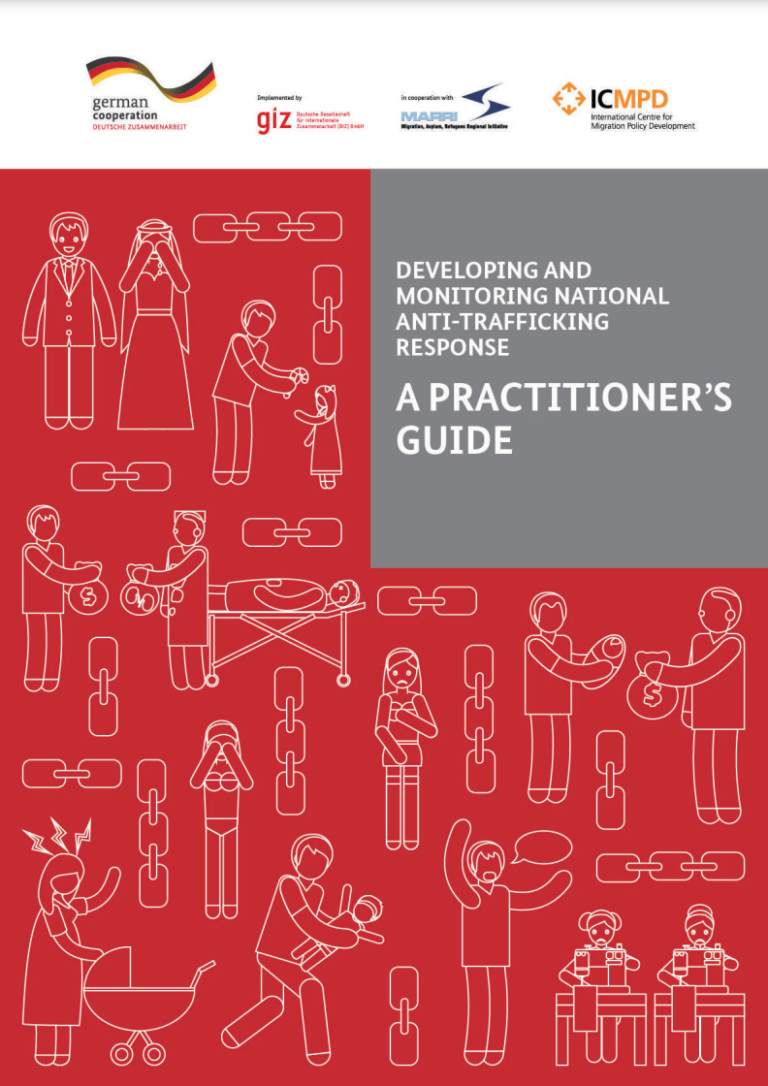This Guide integrates ICMPD’s experience of advising and supporting governments in their anti-trafficking efforts in the past fifteen years from many other regions across the world – from Brazil to West Africa, Middle East and the Caucasus. It is a tool that provides a step by step guidance on what a national anti-trafficking response is, how it should be designed or revised, and by whom it should be implemented. It outlines the key steps and issues to be considered in setting up effective structures and procedures for results-based monitoring, review and evaluation of national action plans to combat trafficking in human beings.
Specific needs and structures established for the fight against trafficking in human beings vary significantly across countries. The goals and actions presented in this Guide are based on European and international standards. Therefore, relevant stakeholders using this Guide will have to adapt the contents to their local context when setting up their anti-trafficking response and systems for monitoring, review, evaluation and learning.
The Guide consists of two main chapters. Chapter A walks the user through a comprehensive set of measures that need to be taken by the governments and anti-trafficking stakeholders to set up anti-trafficking response across the four main areas – prevention, assistance and protection of victims and victim-witnesses, investigation and prosecution of trafficking, and the overall enabling framework. It can be used as an exhaustive ‘checklist’ to help stakeholders to identify long and short term goals and actions to be taken according to the national priorities and needs. Chapter B provides guidance on how to monitor, review, evaluate and report on national action plans against trafficking in human beings, describing how, when and by whom effective review, monitoring and evaluation should be carried out. It is meant to guide everyone involved in a national anti-trafficking response, especially for those stakeholders responsible for coordination of the implementation of the national anti-trafficking response. Finally, in the Annexes we offer the templates of key tools for the main processes discussed in the Guide.

